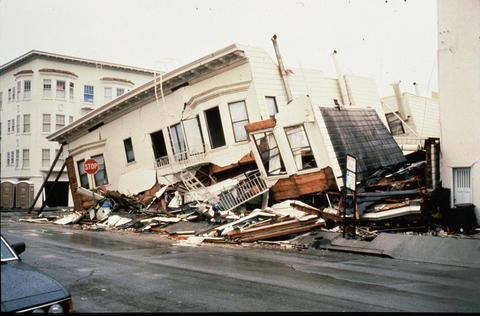National Earthquake Hazards Reduction Program
Challenge

Earthquakes strike without warning. Within the United States, more than 75 million people are located in urban areas considered to be at moderate to high risk for earthquakes. Just the economic value of the physical structures within these regions—not including the potential loss of life and economic disruption—is valued at close to $8.6 trillion. A single large earthquake in the United States, like the one that struck Kobe, Japan, in 1995, can easily cause damage of $100 billion to $200 billion.
A critical gap exists between the results produced by basic research and the implementation of that knowledge in the field. New construction materials, techniques, building codes, and standards do not reflect the current state of knowledge. Through the National Earthquake Hazards Reduction Program (NEHRP), NIST is tasked with conducting problem-focused research to bridge this gap and to promote its application by the private sector.
In addition to enhancing the resiliency of new structures, it is important to establish accurate evaluation techniques for assessing the robustness of existing buildings and to develop cost-effective rehabilitation techniques for those structures that are most vulnerable to collapse or major damage. According to a 2003 National Research Council study, "Perhaps the greatest overall risk in the United States is the severe earthquake damage (including collapse) to existing facilities and lifelines designed without consideration of earthquake effects."
Proposed NIST Program
At the proposed funding level, NIST will:
- identify implementation gaps between basic research results and design guidance and national model building code provisions;
- develop rational cost-effective, consensus-based seismic design and analysis procedures for use in national model building codes;
- design guidelines for the testing and design of major structural systems;
- characterize fully the seismic capacities of typical older building structural components and systems as they are built; and
- develop structural performance criteria, analytical models, and cost-effective rehabilitation techniques for existing buildings.
Expected Impacts
Results expected from the research conducted through this initiative include:
- updated model building codes and standards that incorporate the latest scientific research aimed at reducing the risk to life and property from earthquakes;
- application of the products of basic research related to earthquake effects on buildings and infrastructure into cost-effective tools for evaluating new and existing buildings; and
- technical resources such as guidelines, manuals, and mitigation technologies to enhance U.S. structural engineering practices and improve U.S. economic competitiveness in national and international construction markets.

